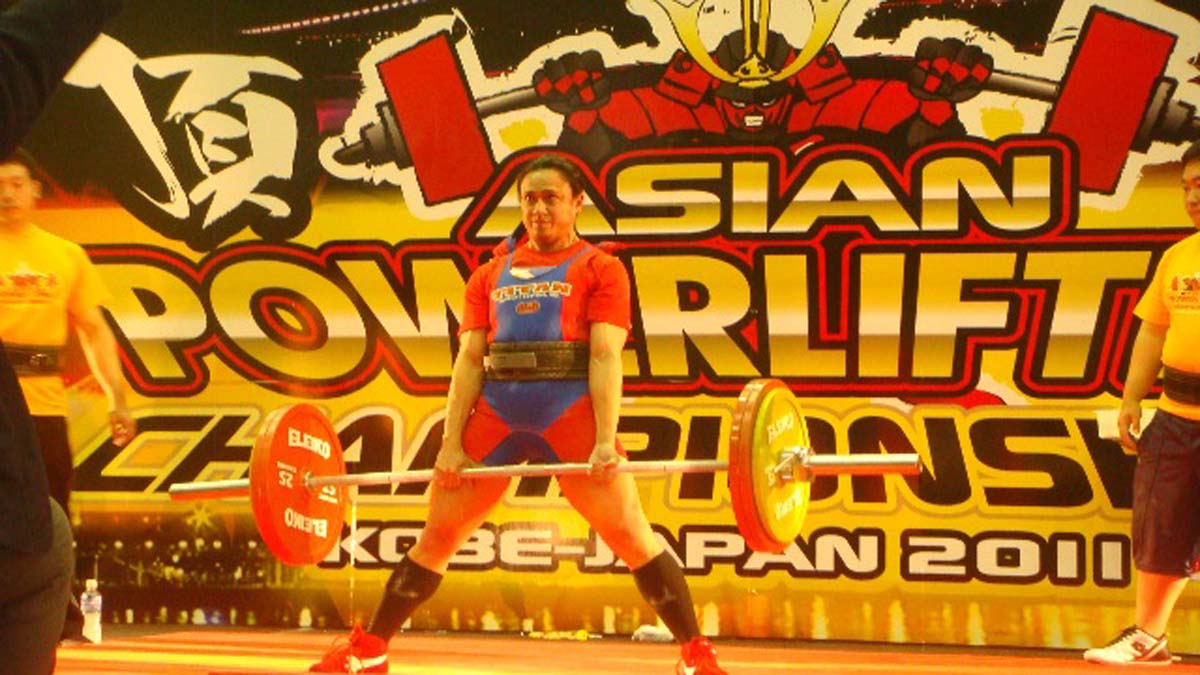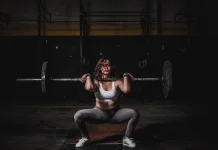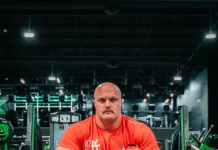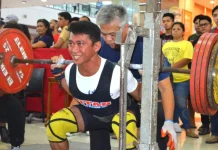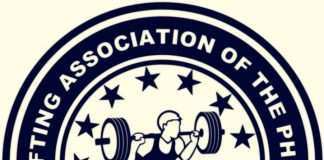Last Updated on December 12, 2023
Improptu strength contests have always been part and parcel of the training regimen of bodybuilders, weightlifters, and even those training with weights for general fitness. For those in the iron game, it has been a way to break the monotony of the seemingly endless sets and repetitions of their training programs.
A form of one-up-manship that could be done right there in the training area with the available equipment. Finding out who can lift the most seems to be a natural adjunct to training with weights. In a sport where lifting greater weights leads to more outstanding results, the natural evolution would be towards a test of strength. Naturally, these impromptu strength contests would revolve around the types of lifts also done in training. For bodybuilders and weight trainers, these would most probably be the bench press. For the weight lifters, the squat or the deadlift.
Imagine a scenario where two bodybuilders are training the bench press. They do their sets in alternate style, one after the other. Starting with light weights, they progressively add plates as they warm up, keeping their reps relatively high as per bodybuilding practice. Suddenly one breaks the monotony by adding plates and doing one heavy rep. Just one. Not to be outdone, the other one adds more plates and lifts that weight. The other lifter counters with still more weight. An impromptu bench press contest has just begun.
The scenario would be even more intense for weightlifters, accustomed as these are striving to lift ever heavier poundages. But instead of the Olympic lifts, imagine that they compete for bragging rights to the heaviest squat. Or deadlift. These are lifts regularly done by Olympic weightlifters as part of their training. It is inevitable that spontaneous contests arise during the times these lifts are trained.
Be that as it may, a formal competition contesting the three lifts was never conducted until powerlifting was introduced as a special event in the Mr. Philippines contests sponsored by Toning Geronimo in the early 1950’s. In November 1963, the Philippine Weightlifting and Bodybuilding Association (PWABA) sponsored the first official meet at the University of Nueva Caceras in Naga City. Among those who conducted the meet were: Messrs. Landero and Canlas, both of Olympic weightlifting fame and Mr. Avendanio, one of the founders of the current Powerlifting Association of the Philippines (PAP). Unfortunately, this competition was not followed by any other for the next nineteen years.
In July, 1982 powerlifting was again revived and included as an integral part of the Ginoong Maharlika Bodybuilding contest – the bodybuilders were required to compete in the power events to increase their chances of winning the Mr. Maharlika title. However, non-bodybuilders were also allowed to compete in the power events exclusively. Mostly Olympic weightlifters joined. Antonio Taguibao (now a colonel in the Philippines Army) and myself, both varsity weightlifters of the University of the Philippines at the time, competed and won (we are the only two lifters from that time who are still competing). As expected, the bodybuilders excelled in the bench press while the weightlifters dominated the squat and deadlift.
Unfortunately, there was a fly in the proverbial ointment – some anomalies surfaced, such as illegal recruitment of armed forces lifters to boost the point standing of one of the teams, non-payment of meet personnel, and non-issuance of trophies to the competitors. Mr. Stan Carbungco, who had already provided the meet equipment gratis, had to dip into his personal funds to salvage a rapidly deteriorating situation. Clearly there was a need for an official body that would oversee the conduct of future powerlifting competitions.
Thus was born the Powerlifting Association of the Philippines. Among the incorporators were: Col. Godofredo Carreon (ret.), Mr. Stan Carbungco, Mr. Rolly Pintoy (former Mr. Philippines, than a actor better known by his screen name Roland Dantes), Mr. Avendanio, and a few other upright individuals who had real love for the sport. Most responsible for solidifying the foundation of the sport was Col. Carreon, now the PAP’s Chairman Emeritus. Through his superlative management skills he steered the body into promulgating a constitution and by-laws, registration with the Securities and Eschange Commission, and international recognition by the International Powerlifting Federation (IPF), and its Asian arm, the Asian Powerlifting Federation (APF).
In August of 1983, the PAP held its 1st National Open Powerlifting Championship at the HPC Multi-Purpose Center at Camp Crame. This was an especially auspicious event because aside from the local lifters, it was graced by the presence of an international cast consisting of lifters from Japan, Clar Air Base, and the US Marine Corps. That competition was eventually won by Japan.
In 1988 the PAP was able to send its first National Powerlifting Team to Takamatsu, Japan for the 3rd Asian Powerlifting Championships. In 1992, the PAP was able to send a larger team composed of 6 men and 6 women to the 1992 Asian Powerlifting Championships held in Jamshedpur, India. The team was led by Erlina Pecante with one silver and a bronze medal in my category.
The following year’s Asian Championships held in Kaoshiung, Taiwan was more fortuitous with 4 gold medals courtesy of Lily Pecante and Eddie Torres, and a number of silver and bronze medals. The Philippine team was starting to mature in international competitions.
In 1994 the Philippines marked its entry as a bona fide host of the international powerlifting arena by hosting the 1994 Men’s and Women’s Asian Powerlifting Championships at SM North EDSA. Widely acclaimed as one of the most successful Asian Powerlifting meets up until that time, the competition was marked by world class performances among which were the setting of several powerlifting world records.
Since then, with the help of the Philippine Sports Commission and various private sponsors, the PAP has been able to send a National Team to the Asian Powerlifting Championships each and every year until the present. In 1995 the competition was held in Mangalore, India. In 1996, it was in Almaty, Kazakhstan. In 1997, Changwa, Taiwan. In 1998, Samchuck, Korea and in1999, New Delhi, India.
This year (2000) the Asian Powerlifting Championships was held in Zarafshan, Uzbekistan. Each and every year, the Filipino athletes have improved on their performances. From also-rans that didn’t merit a second glance from the other country’s competitors, Philippine powerlifters have become a force to contend with. To date Filipino powerlifters have only won gold, silver and bronze medals, but also hold Asian Records in Powerlifting.
On August 18-21, 2000 the Philippine will again prove its commitment to the promotion of powerlifting by hosting the Millenium Asian Benchpress Championships. The event will be held at the Robinsons Place, City of Manila. If previous performances are to be based upon, this event should prove to be another feather in the cap of the Philippine Powerlifting Association in it’s bid to promote powerlifting not only in the Philippines, but in the international arena.
From the souvenir program of the Millenium Asian Benchpress Championships


